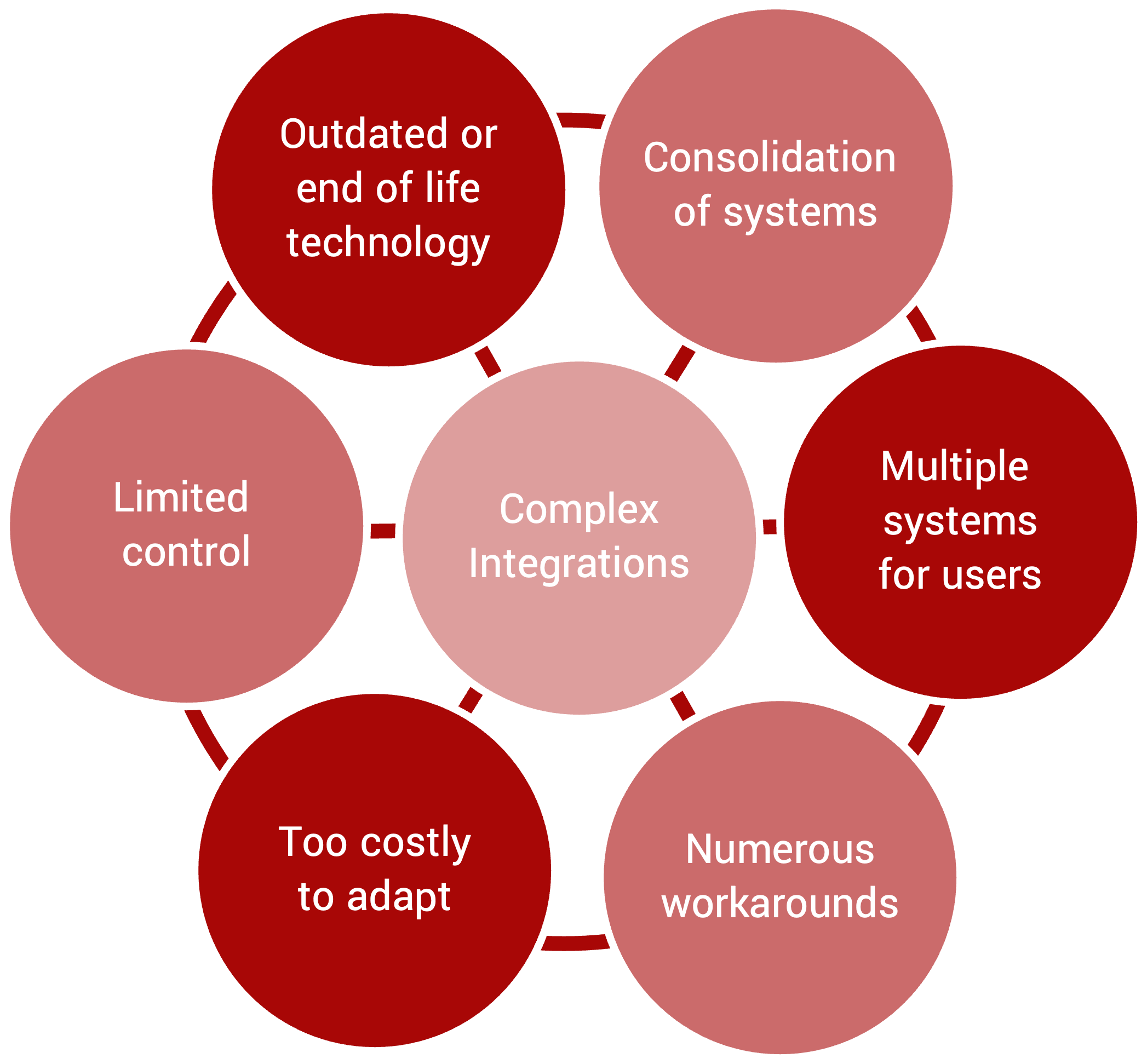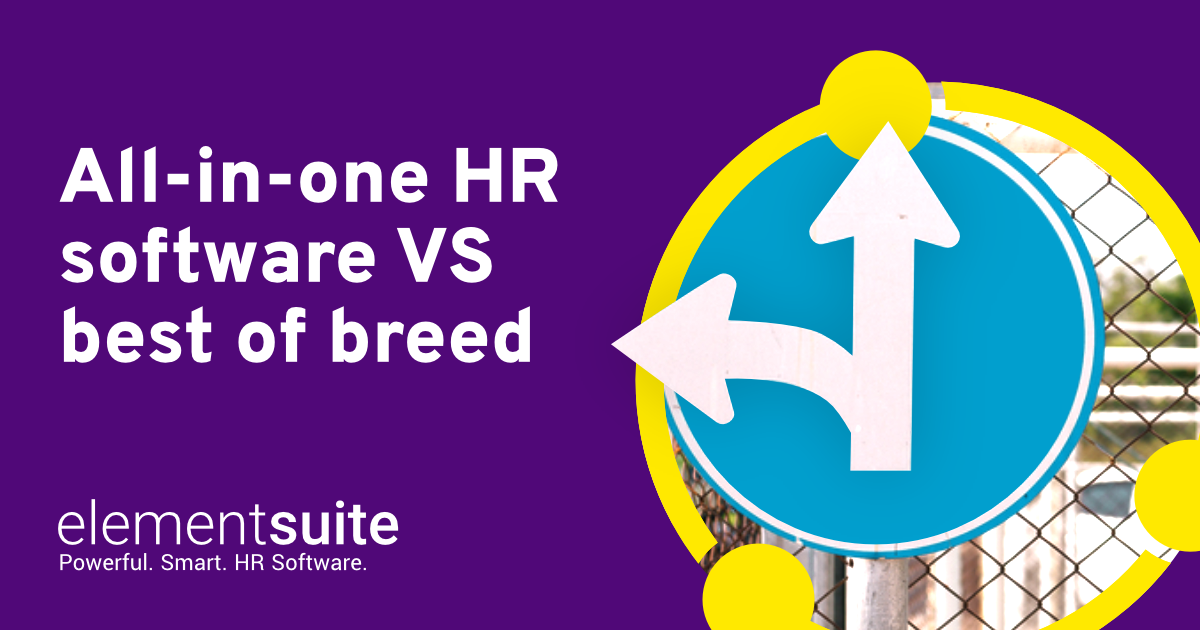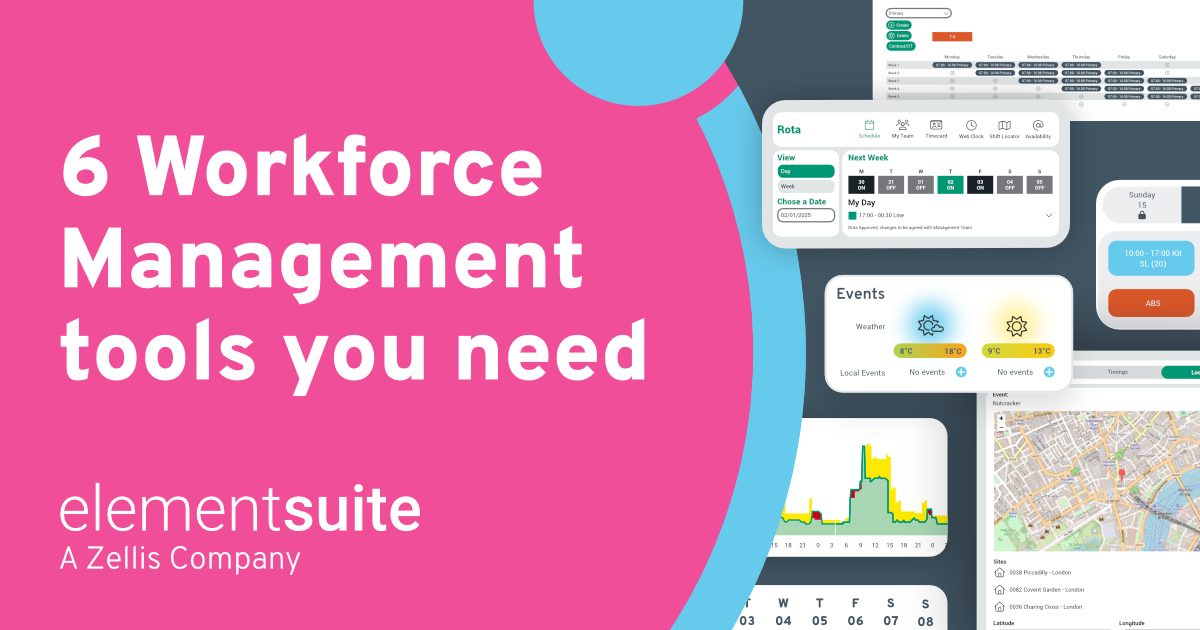Choosing a new software solution for your organisation can feel a little daunting, regardless of whether its new HR software or marketing automation. The ultimate goal is to select what’s right for your businesses, but sometimes that’s not so easy either. It’s a debate that’s raged for some time – do you get more bang for your buck by leveraging a portfolio of best-of-breed solutions or should you go for an all-in-one solution?
The problem
There are all those fires burning in HR, but it’s not just firefighting, it’s about getting ahead – you need some future proofing too. Choosing HR software is not a transactional purchase that you can change easily every few months, which means it really needs to work for your business and your people – now and into the future.
What is your driver for change? The usual suspects are numerous, alongside the everyday HR hurdles and challenges that you want to solve. And deliver a stronger, more robust and resilient people strategy that works for your people as well as the business.

You should also consider the context of all those other systems and processes from around the business. Do they need to talk to each other? Should they integrate into your new system? What are your goals and desired outcomes?
To put it bluntly, you need to find a solution that solves all these challenges and more importantly works for you.
But the real question is – does an “all in one” or “best of breed” HR platform strategy offer the most flexibility, agility, risk mitigation and future-proofing?
What COVID has taught us
If COVID has taught us anything, it is that the world changed (and is changing) rapidly, and your HR system needs to be able to flex to the demands of a changing world. During the height (or depths) of the COVID pandemic, there was a tangible movement of HR focus on the core route to pay processes – or going back to basics. The speed of adaptation to wildly changing government policies regarding furlough pay was paramount and the strategic HR agenda for most organisations shifted from growth to resilience (and even survival). The core foundations of the HR house were rocked by the COVID storms and it was important that the walls and roof didn’t cave in.
now we are emerging…
…from the storms and blinking at the sunny uplands of post COVID growth, and making use of the conservatory, garage and additional rooms of the HR house again, an equal and opposite adaptation is needed to focus on HR value add. Companies are struggling to recruit, talent manage, train, and communicate effectively to staff as they adapt to returning to the office and hybrid working.
With this in mind, the 2 key challenges are simply:
- Did you struggle with your systems to focus on the HR and Pay, the basics of staying compliant and paying people correctly during the heights and depths of COVID
…and…
- Are you now struggling to seamlessly refocus from Core HR Basics back to wider strategic HR initiatives, and are your systems fully supporting the return to Business as Usual?
Remember those questions, consider your answers and hold that thought as your read on
If the answer to one or both of these questions is “yes” – then you should consider whether your core platform offers the core capability and foundations required, and perhaps orient towards an “all in one” single platform strategy. Making sure that the core foundations are in place for your HR house with flexible reporting, integration and interoperability, offers a sound basis for safe retreat in the storm and extension to build a better conservatory later.
However, if you didn’t struggle with these 2 questions – then your core platform is sound, and your bias can orient towards a best of breed strategy, to augment your core capabilities with high value add-ons that can be easily integrated with your core platform. Dwelling in your sunny conservatory extension is a good place to be in your HR post-COVID house.
The allure of ‘all in one’ HR platforms
When your organisation is trying to tackle multiple issues, the pressure to make the right decision is high. The decisions made by HR can support the strategic goals of the business, along with driving general efficiencies and improvement. Obviously, it’s going to feel fantastic if you can solve all your challenges, but issues and challenges can change too, with a new direction for the business, fresh priorities and a changing competitive landscape.
All this adds up to the need for flexibility and scalability with the decisions you make. Since all in one platforms typically offer a strong Core HR solution and a range of other functions, they can be a good basis for platforming your HR transformation journey with solid core route to pay functions and augmenting or testing the waters with additional talent, recruitment and engagement features.
Pros and cons of ‘all in one’ platforms
Pros | Cons |
One unified solution
| Missing functionality
|
Lower cost
| Not for super users
|
Training and onboarding
| Flexibility
|
Faster implementation
| Innovations and updates
|
Single vendor relationship
| Unnecessary functionality
|
Integration works out of the box
| Who is in the driving seat?
|
Security and support
| Doesn’t play well with others
|
Taking the best of breed approach
Many organisations are favouring a more agile approach to software with a best-of-breed approach. When taking this approach (best-in-breed technology), they are building a technology stack that involves selecting various tools that serve very specific purposes. Instead of purchasing a product suite from a single vendor that tries to be everything to everyone, they are adopting specialised solutions from a variety of vendors and integrating them.
A best of breed strategy means selecting specialised products to meet a particular niche or category, that performs specialised functions… does what it says on the tin.
Pros and cons of best of breed
Pros | Cons |
Optimum performance
| Expensive
|
Power user functionality
| Implementation difficulties
|
Deeper functionality
| Multiple vendors, multiple contracts
|
Dedicated support
| Vendor support and in house maintenance
|
User experience
| Complexity and data overload
|
Speed of implementation
| Risk
|
Integration
| Back up and support
|
What should you choose?
As you can see there is no silver bullet, there’s no truly right answer, although there are many HR software writers and critics who feel that one or other of these is preferable. What should influence your decision depends on your needs, your financial situation and budget. Be aware that choosing Best of Breed may require integration capability to ensure that the solution is joined up with the HR processes in your organisation. Your in house capability will require support from your chosen vendor or vendors and any other third parties you might need. You will also need to think about implementation – we often read about how long these projects take to implement, transparency on the implementation process with a robust project plan will help to get your project across the line, so you can enjoy the value it delivers. Speed to deliver and time to deliver value should also be a key part of your decision making.
Even if the tool you prefer ticks most of the boxes in terms of fulfilling your goals it may be difficult and unwieldy to implement and for user adoption. You want this to work, which means including operations, IT, digital transformation (if you have them), and users early in your decision-making process.
there is no truly right answer to the question – All-in-one or best of breed
There’s no truly right answer to the question of whether to choose a best of breed vs single platform. To a certain extent your choices will be driven from your experience, market factors, your budget (!) and your intuition. There may be a genuine need to differentiate your business and processes by selecting some smart tech from a best of breed vendor. But don’t be surprised if they’re not transparent about the hidden costs of integration.
Buying different pieces of a beautiful jigsaw doesn’t necessary mean they all fit together – different security models, data governance and different contract frameworks can cause headaches if you do not have your IT / integration folks involved and engaged, and you’ll need mature governance in place. With an all-in-one platform you will have one vendor who will be totally accountable for your end to end HR processes and data processing. In the end you need to decide between simplicity or differentiation. If you’re not confident about your basics and essentials, then a single platform solution is far simpler to manage. But if you’re confident that you’ve got the basics in place then differentiation with a best of breed solution may work.
It’s a bit like whether to shop at Amazon or to go for a stroll down the High Street. Single platform provides convenience and simplicity. Best of Breed provides differentiation and choice.




